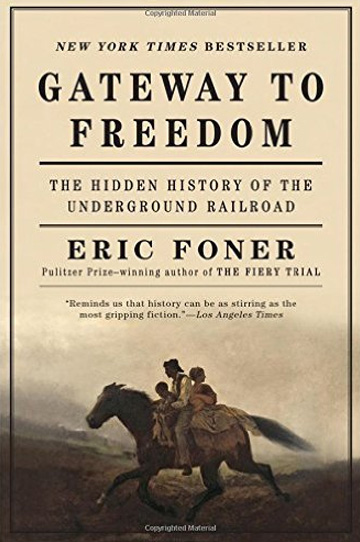
Gateway to Freedom
January 16, 2015 | The Barnes & Noble Review
A fugitive slave never stops running. During the nineteenth century, escaped slaves from the American South looked over their shoulders until they reached Canada, which stoutly refused to extradite them. Slave catchers roamed the cities of the North. Federal law and even the American Constitution abetted their awful work. Whites were more likely to betray than to help. Sometimes masters even made direct contact with their ex-chattels, on newly equal terms. A quarter century after Jermain Loguen escaped from bondage, his former master’s wife wrote and demanded payment for the horse on which he had absconded. She even chided, “You know we raised you as we did our own children.” Loguen responded with fire: “Woman, did you raise your own children for the market? Did you raise them for the whipping post?”
Many who escaped slavery did so via the Underground Railroad, a network of hiding places that occupies a romantic place in American history. Stories of Harriet Tubman’s daring raids into slave country stir the imagination, just as the Quakers’ care for runaways continues to foster a special pride 150 years on. Yet the term “Underground Railroad” is slightly misleading, giving as it does the impression of something as solid and tangible as a pair of tracks running north. In Gateway to Freedom, historian Eric Foner contends that the Underground Railroad was not “the highly organized system with tunnels, codes, and clearly defined routes and stations of popular lore, but an interlocking series of local networks, each of whose fortunes rose and fell over time.” Sometimes it was not a “railroad” at all: slaves escaped by boat, on foot, and in carriages. One brave soul even shipped himself to Philadelphia in a crate.
For such a fascinating topic, the Underground Railroad has not been the subject of many popular stand-alone histories. Foner’s book is a welcome addition, synthesizing the known facts and analyzing them in clear and compelling prose. (Foner, who received the Pulitzer Prize for his 2010 The Fiery Trial: Abraham Lincoln and American Slavery, is a leading scholar of slavery and Reconstruction.) The only strike against Gateway to Freedom is that there isn’t more of it; it is a slender and focused study rather than a comprehensive account.
Foner explains that most fugitive slaves were men in their twenties: the chief reason for their escape, unsurprisingly, was physical abuse. Though popular representations in paintings like those of Eastman Johnson suggested otherwise, many left families behind in order to make the dangerous journey. The vast majority were runaways from the upper states of Maryland, Virginia, Delaware, and North Carolina, which were close enough to the free North to make an attempt feasible.
The number of fugitives was far too small to have posed any existential threat to slavery as an institution. Fugitive slaves nevertheless played an outsize role in the Southern imagination. Residents of slave states viewed the reluctance of Northern authorities to return their property as a breach of honor and a direct abridgment of the Constitution. During the secession crisis, South Carolina, which lost comparatively few slaves via escape, listed the fugitive issue as one of its chief grievances. The Fugitive Slave Act of 1850 obliged all states to return runaways to their owners and provided for sham hearings to establish the identity of fugitives. One judge presiding over such a hearing lamented the absence of his pistol; he “would have liked to have sent a few of those damn niggers to hell.”
Foner makes a special study of New York City’s Underground Railroad, led by David Ruggles of the New York Vigilance Committee, as well as the freelance “conductor” Sydney Howard Gay. They were overworked and underpaid. One remarkable memorandum finds Gay grousing that colleagues to the south should not send fugitives in the middle of the night because doing so created a hardship for his elderly colleague: “This is very unnecessary labor, which all falls upon an old man who is paid a mere trifle for doing it.” Other passages in the book provide fascinating insights into the mechanics of the Railroad, such as an ancillary “sewing society” that provided plenty of “clean and nicely mended clothing on hand” to disguise slaves arriving in tattered rags. Such measures were imperative in New York, where strong commercial ties to the South created an atmosphere resistant if not downright hostile to sheltering runaways.
That was not the only obstacle standing in the Underground Railroad’s way. The flip side to escape was kidnapping — an issue popularized recently by the film 12 Years a Slave, which depicts the abduction of the free man Solomon Northup. There was also infighting within the abolitionist movement, some of whose members wished to focus on the eradication of slavery generally rather than the aid of individual runaways. The Civil War finally put an end to these spats. For the operators, it was a joyful going-out-of-business. “An end is put to the Underground Railroad,” wrote one activist. “I take this opportunity to thank the contributors to the treasury of the Philadelphia Vigilance Committee, and to notify them that in all probability we shall have no further call for their aid in this particular line of business.”